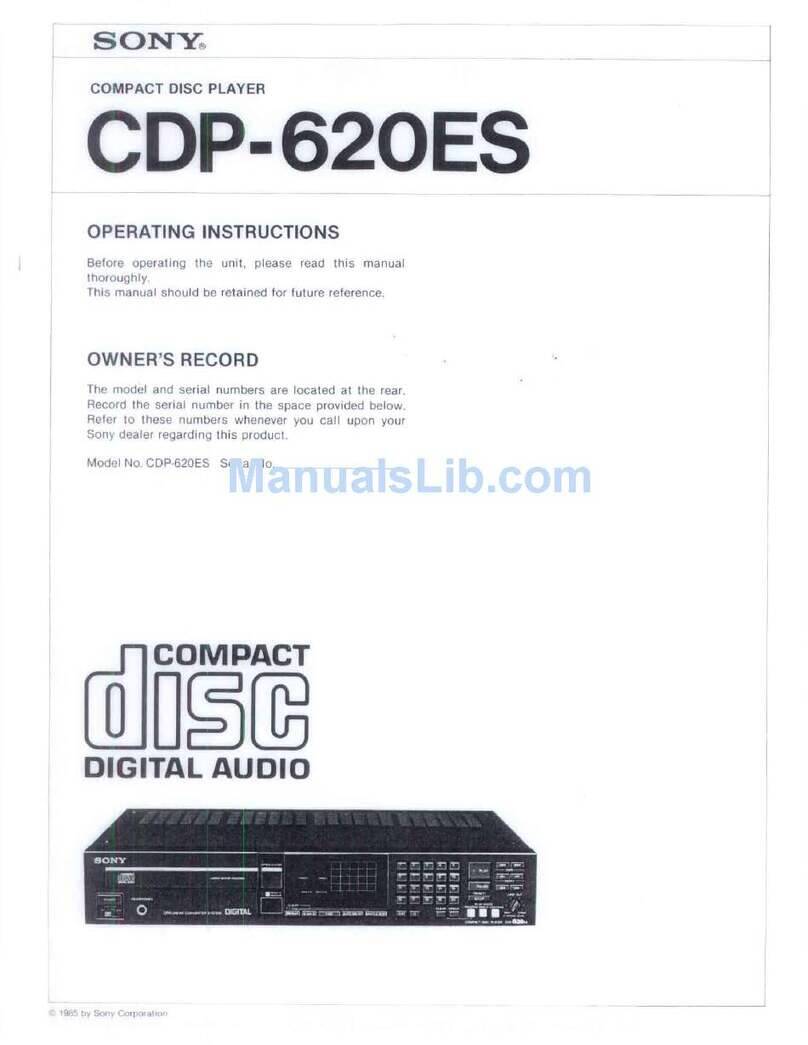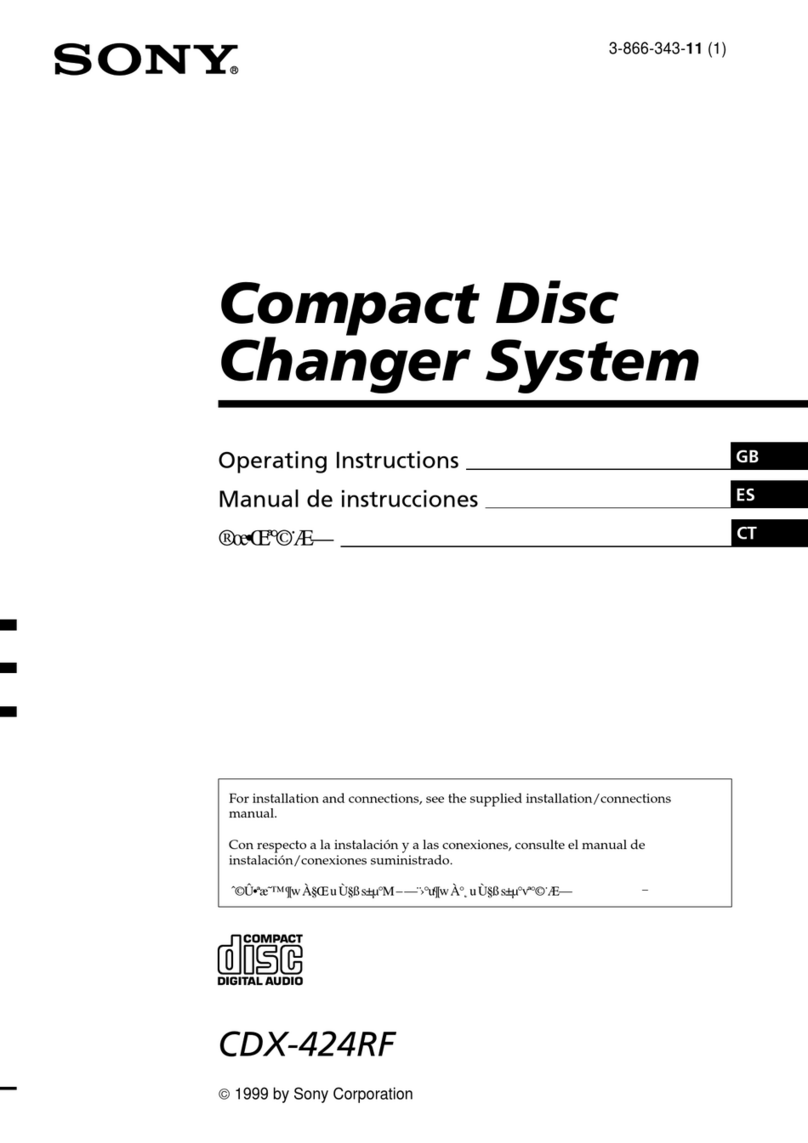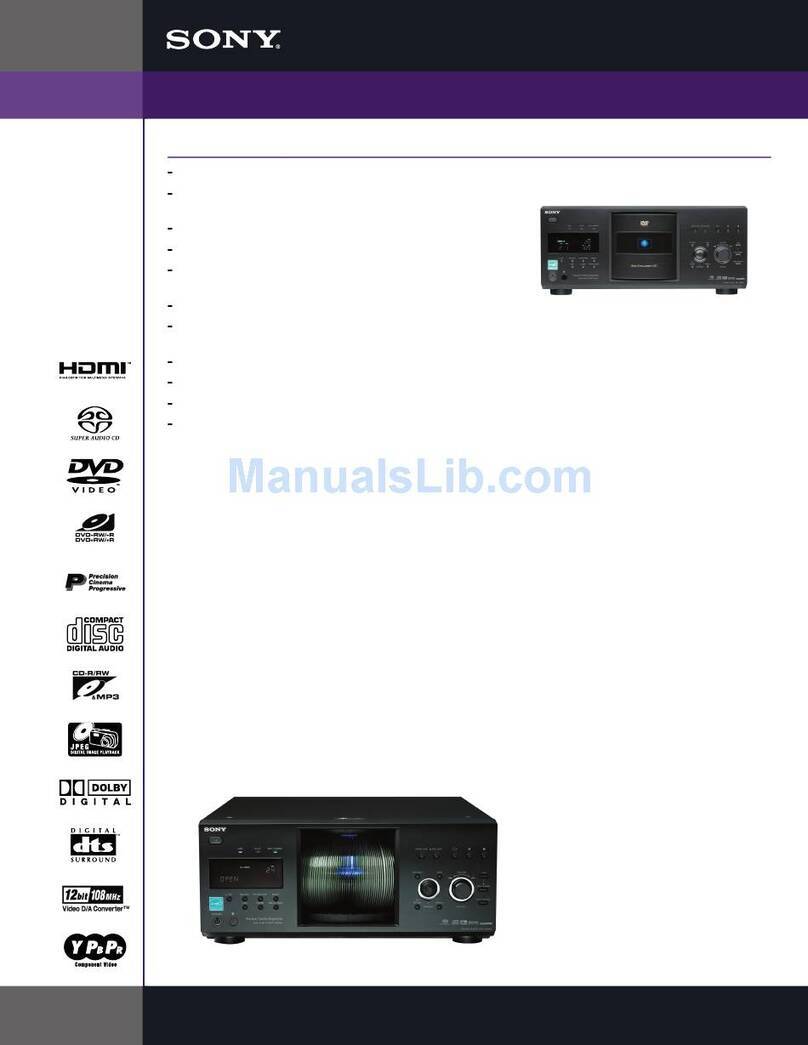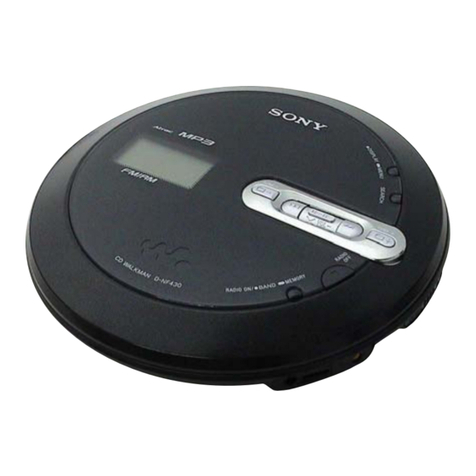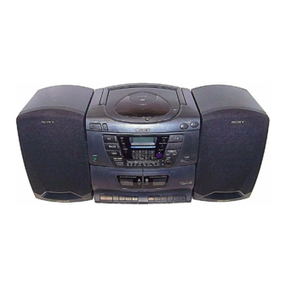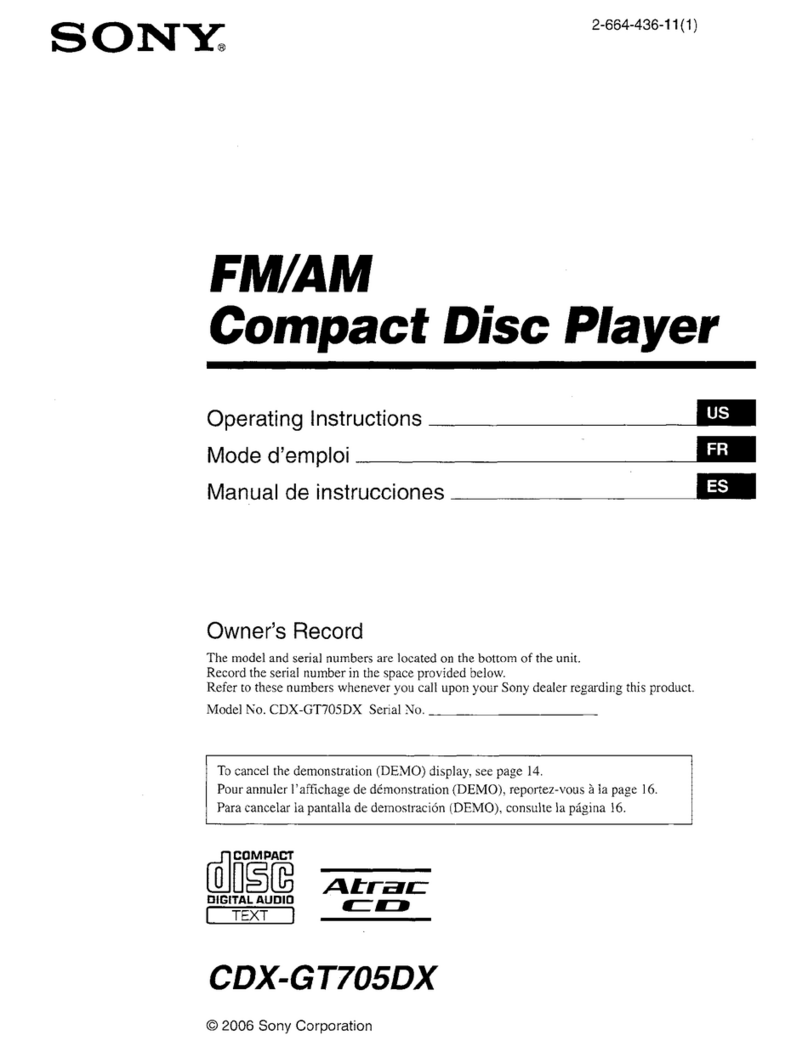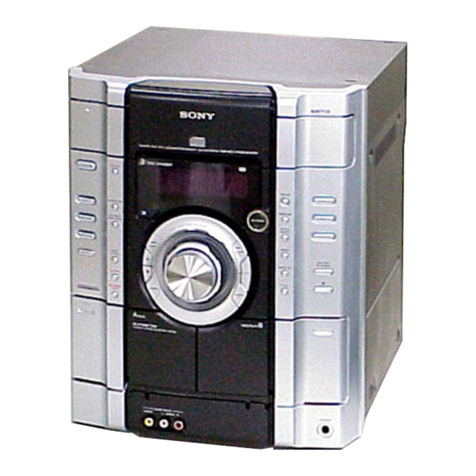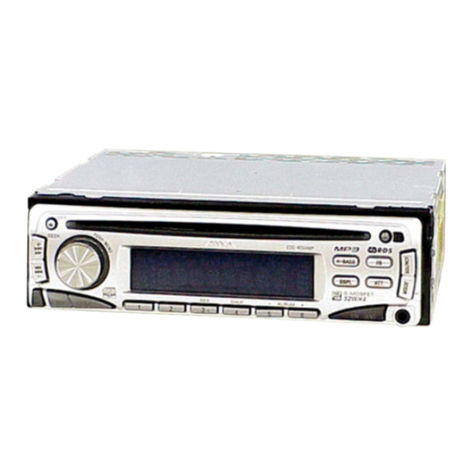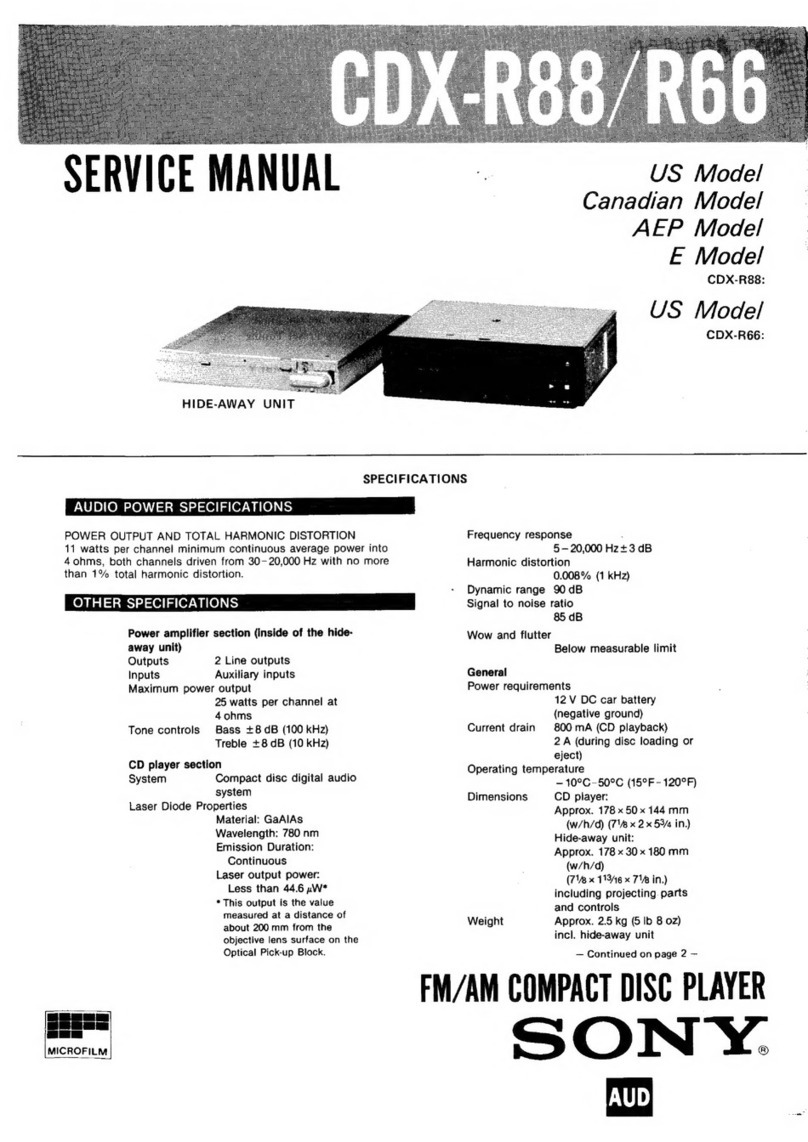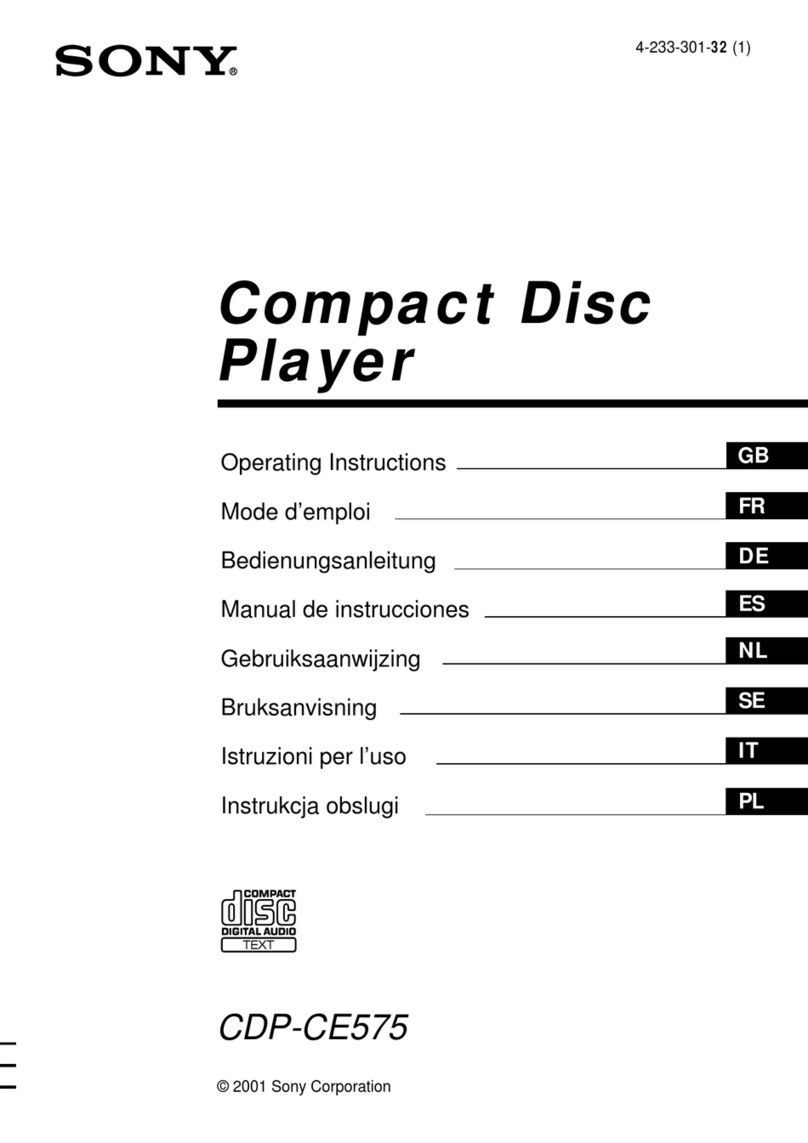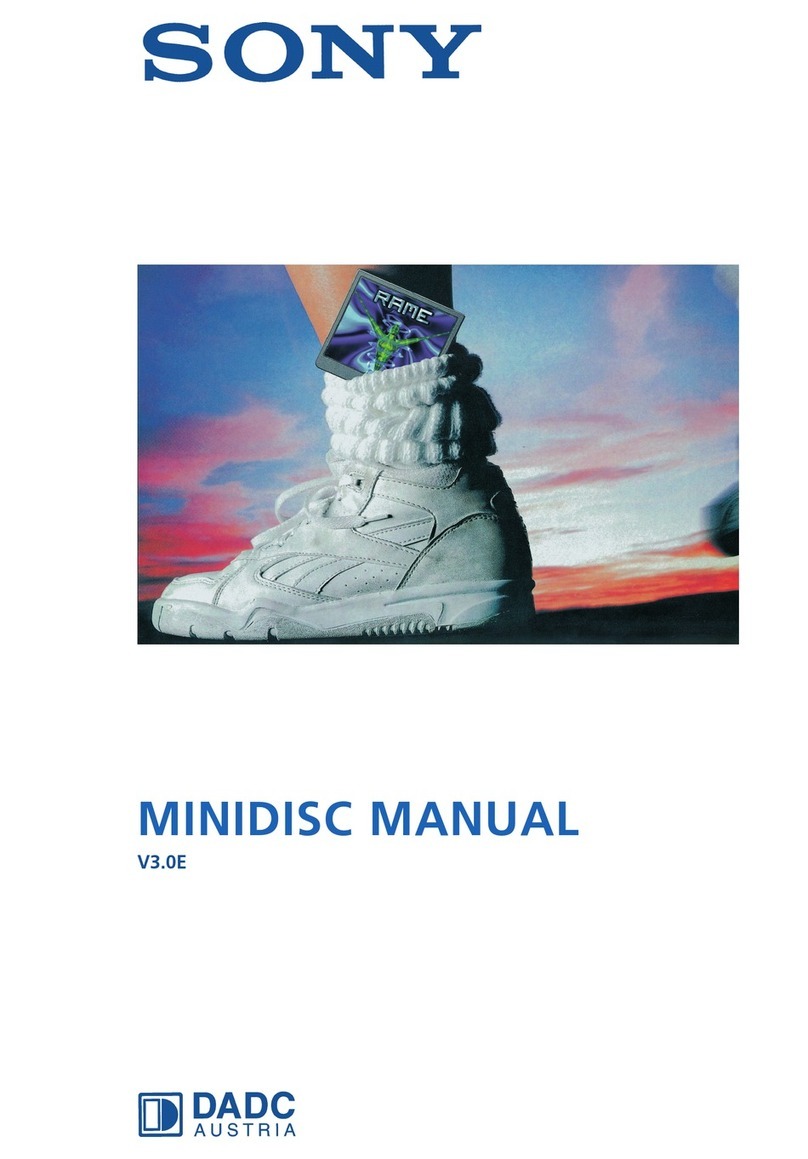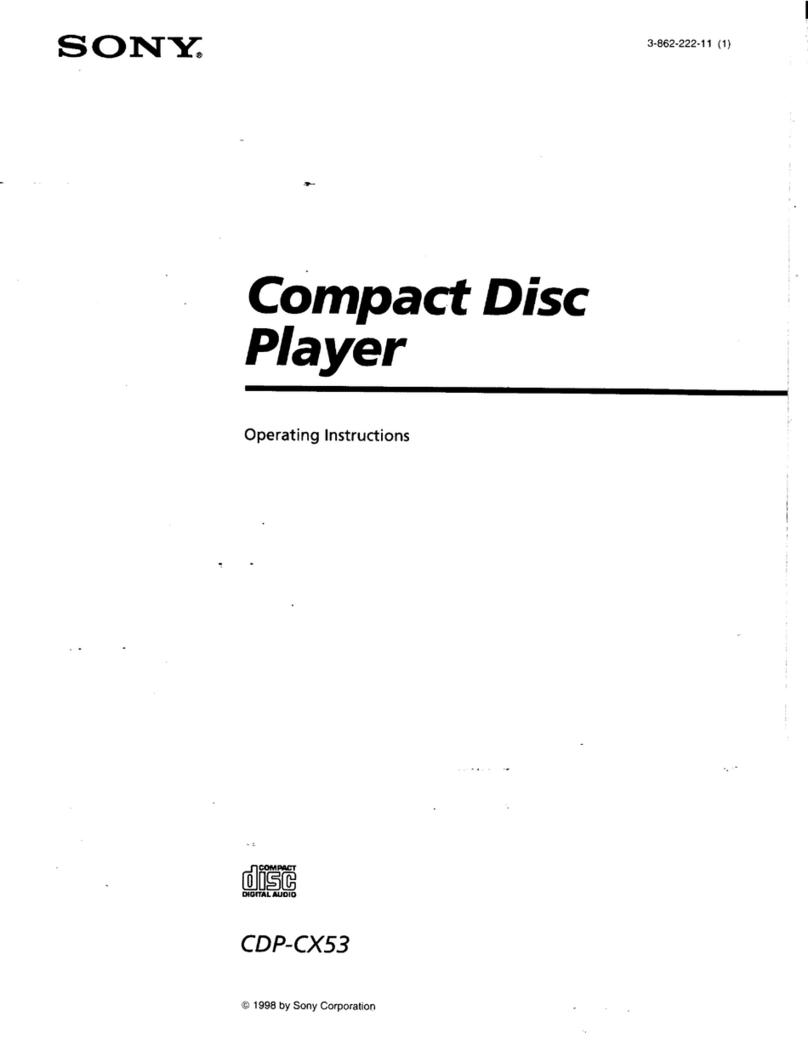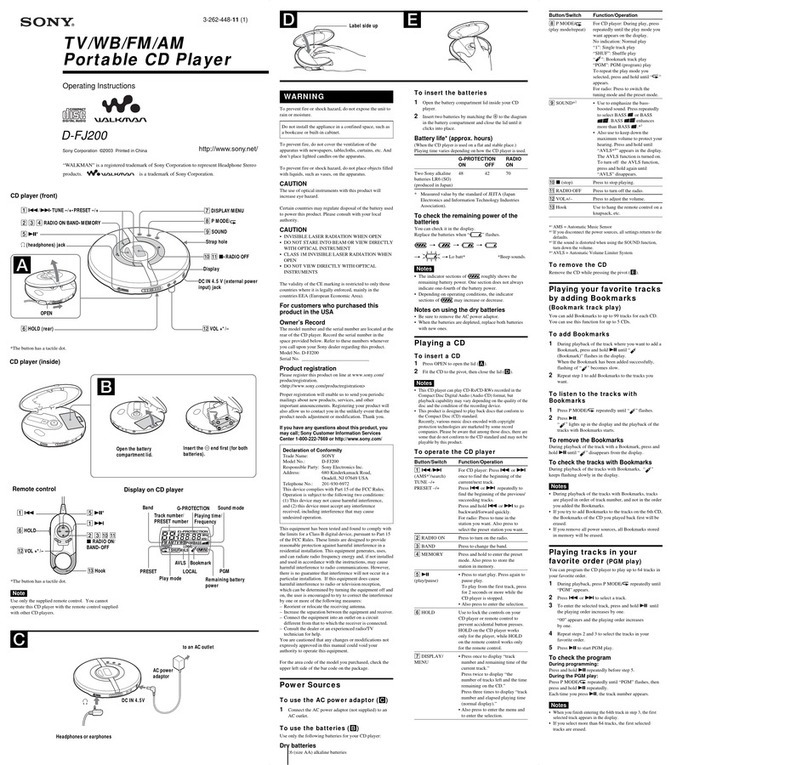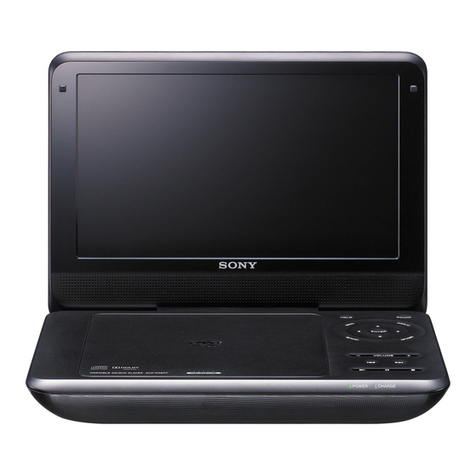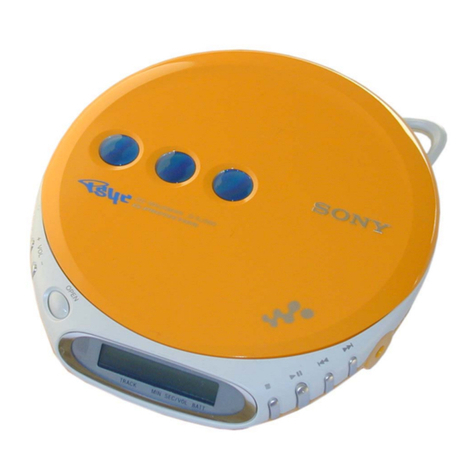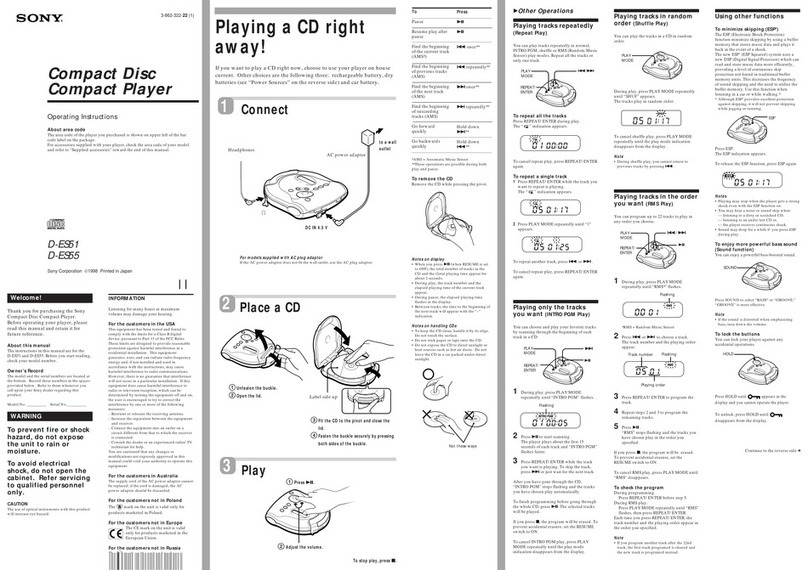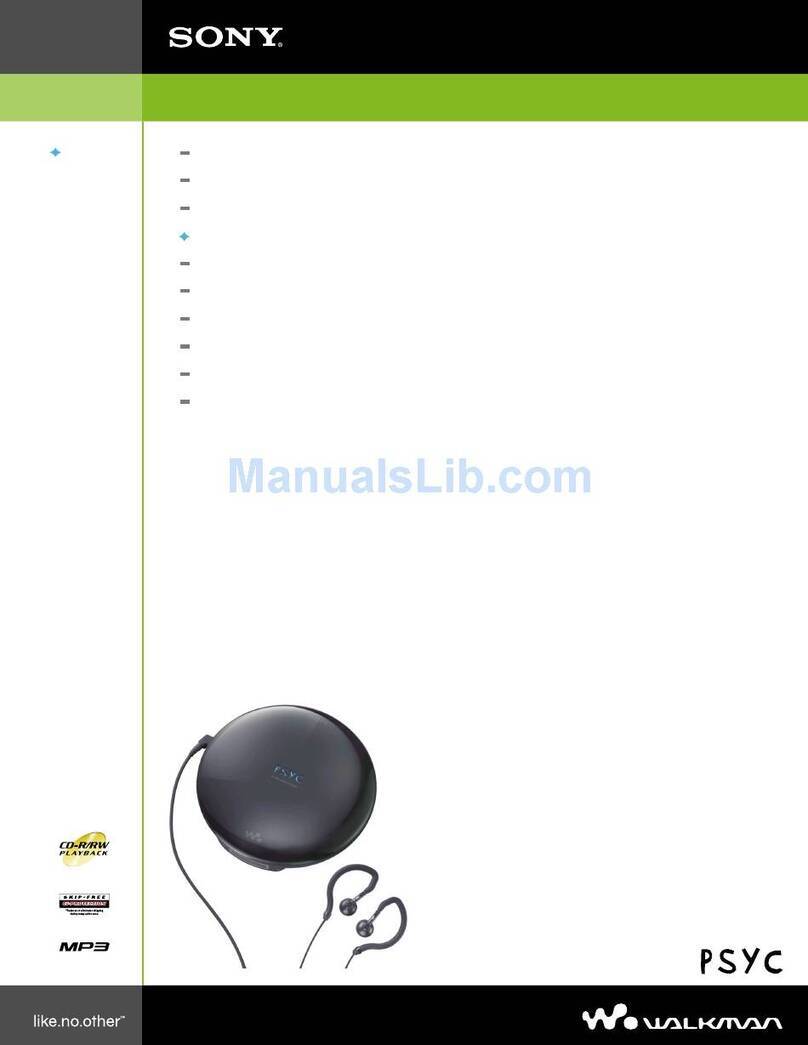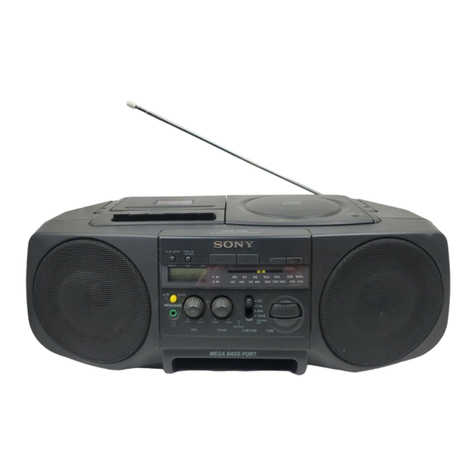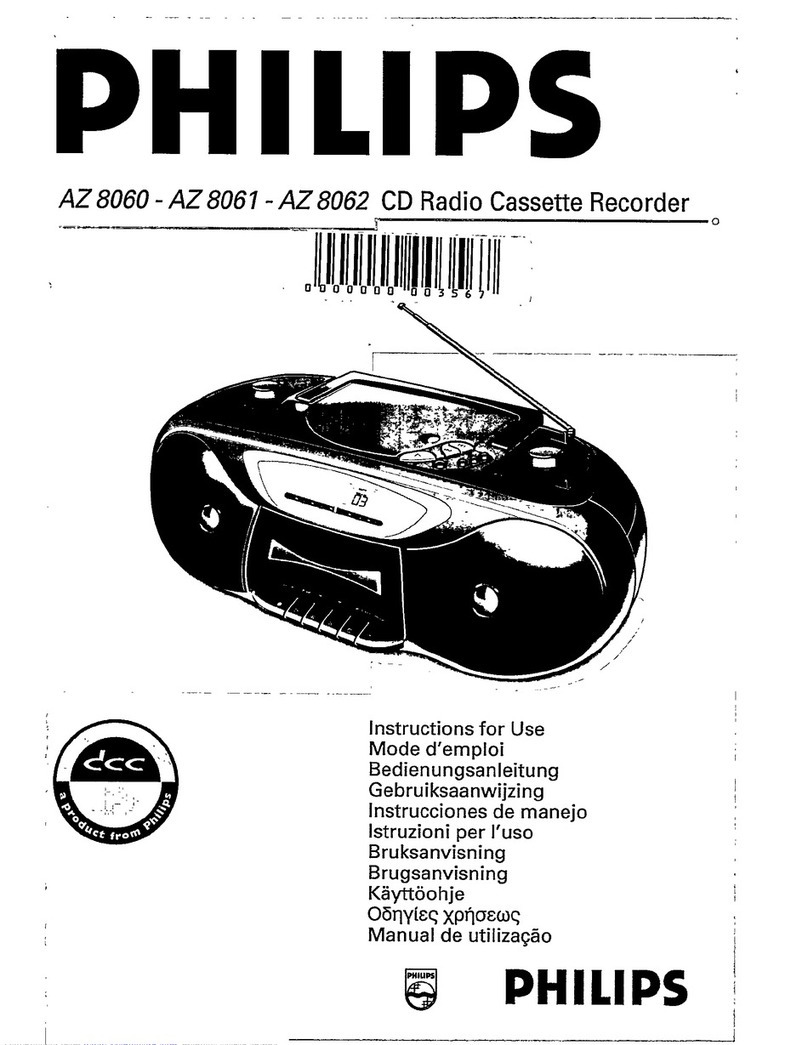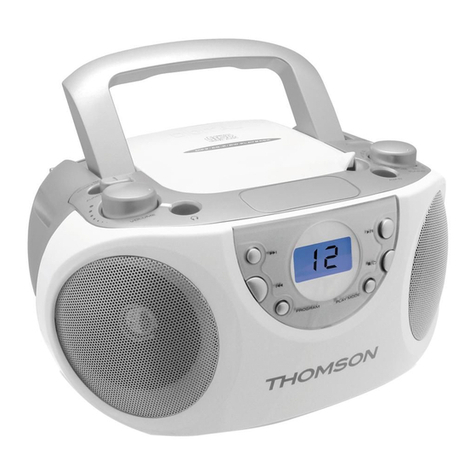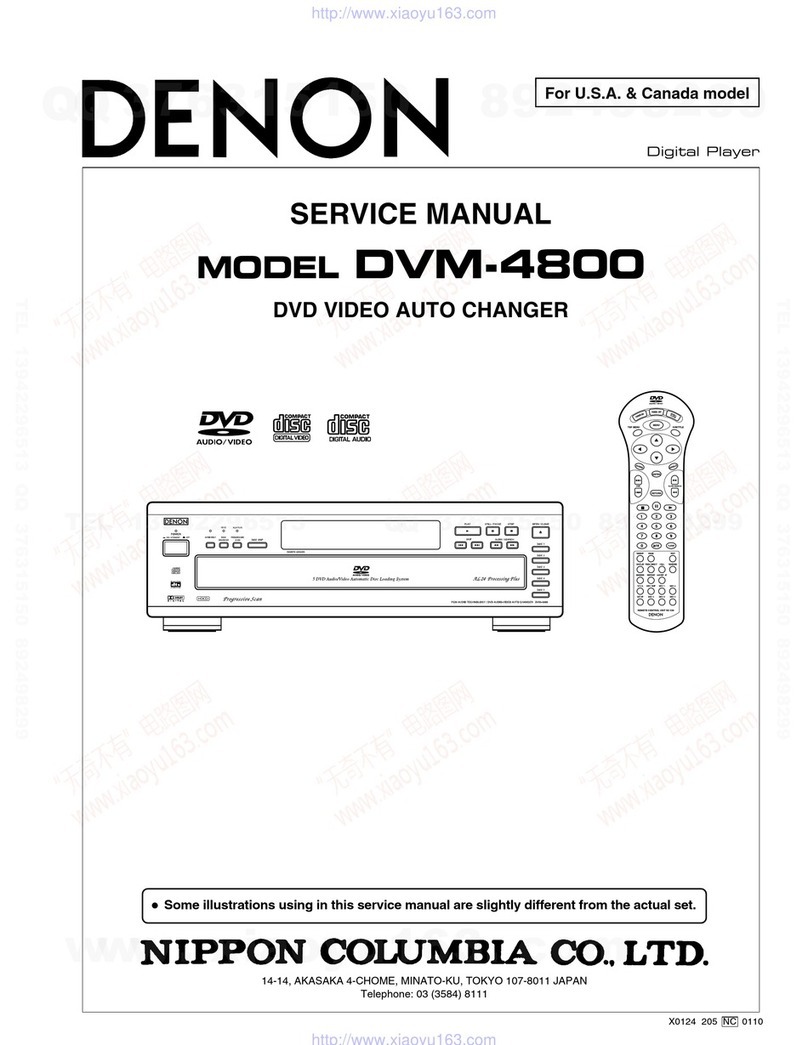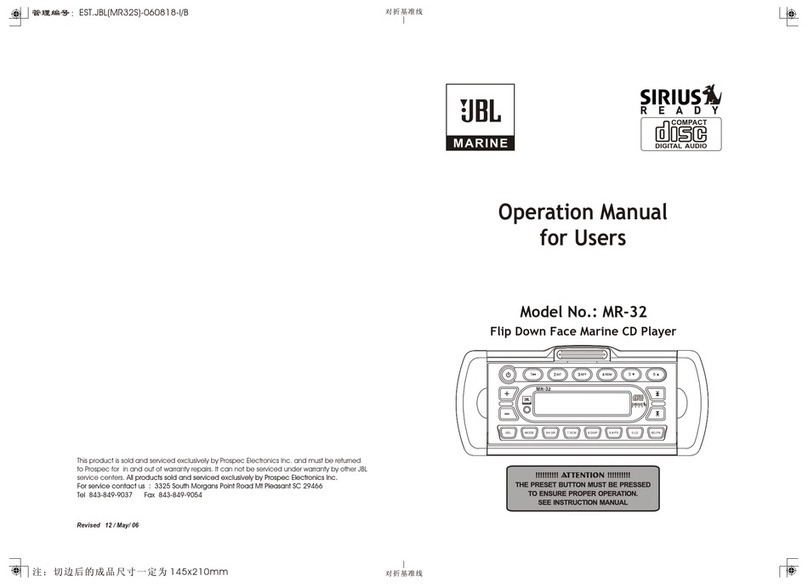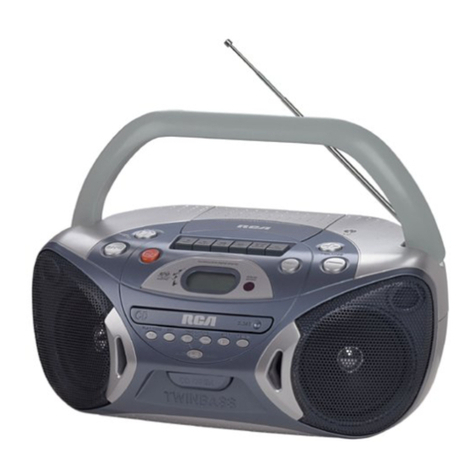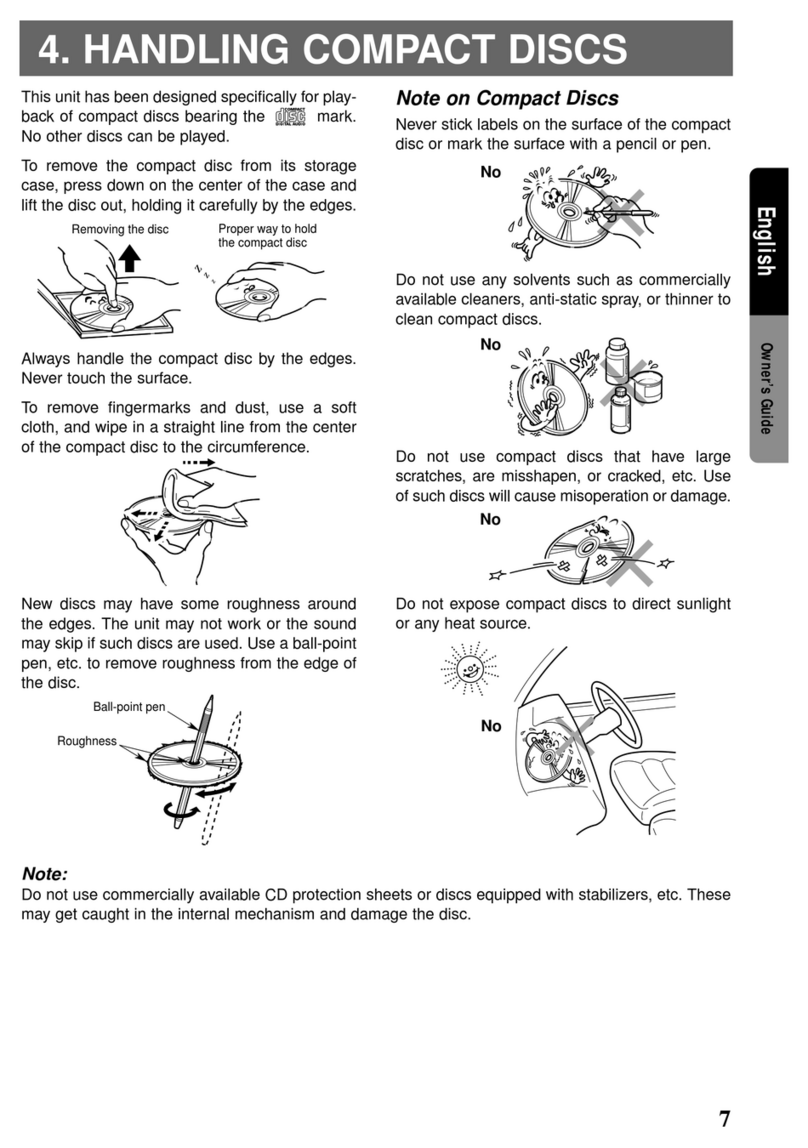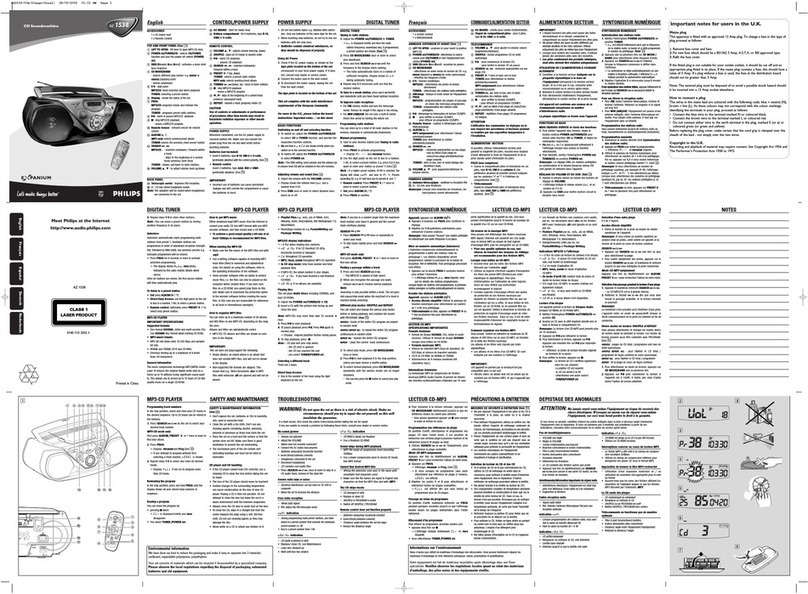
Tape Player
The tape does not move when you
press an operation button.
• Close the cassette compartment securely.
The z button does not function or the
tape does not play or record.
• Make sure the safety tab on the cassette is in
place.
Poor or distorted playback, recording
or erasing quality.
• Clean the heads, pinch roller and capstan with
a cleaning swab slightly moistened with
cleaning fluid or alcohol.
• Replace all the batteries with new ones if they
are weak.
• TYPE II (high position) or TYPE IV (metal)
tape is being used. Use TYPE I (normal) tape
only.
• Demagnetize the heads using a commercially
available tape head demagnetizer.
After trying the above remedies, if you still have
problems, unplug the mains lead and remove all
the batteries. After all the indications in the
display disappear, plug the mains lead and insert
the batteries again. If the problem persists,
please consult your nearest Sony dealer.
©2004 Sony Corporation
Operating Instructions
CD Radio
Cassette-
Corder
2-515-702-12 (1)
CFD-S170L
Precautions
On safety
• As the laser beam used in the CD player
section is harmful to the eyes, do not
attempt to disassemble the casing. Refer
servicing to qualified personnel only.
• Should any solid object or liquid fall into
the player, unplug the player, and have it
checked by qualified personnel before
operating it any further.
• Discs with non-standard shapes (e.g.,
heart, square, star) cannot be played on
this player. Attempting to do so may
damage the player. Do not use such discs.
Cleaning the cabinet
• Clean the cabinet, panel and controls with
a soft cloth slightly moistened with a mild
detergent solution. Do not use any type of
abrasive pad, scouring powder, or solvent,
such as alcohol or benzine.
On power sources
• For AC operation, check that the player’s
operating voltage is identical with your
local power supply (see “Specifications”)
and use the supplied mains lead; do not
use any other type.
• The player is not disconnected from the
AC power source (mains) as long as it is
connected to the wall outlet, even if the
player itself has been turned off.
• For battery operation, use six R20 (size D)
batteries.
• When the batteries are not to be used,
remove them to avoid damage that can be
caused by battery leakage or corrosion.
• The nameplate indicating operating
voltage, power consumption, etc. is
located at the bottom.
On placement
• Do not leave the player in a location near
heat sources, or in a place subject to direct
sunlight, excessive dust or mechanical
shock.
• Do not place the player on an inclined or
unstable place.
• Do not place anything within 10 mm of
the side of the cabinet. The ventilation
holes must be unobstructed for the player
to operate properly and prolong the life of
its components.
• If the player is left in a car parked in the
sun, be sure to choose a location in the car
where the player will not be subjected to
the direct rays of the sun.
• Since a strong magnet is used for the
speakers, keep personal credit cards using
magnetic coding or spring-wound watches
away from the player to prevent possible
damage from the magnet.
On operation
• If the player is brought directly from a
cold to a warm location, or is placed in a
very damp room, moisture may condense
on the lenses inside the CD player section.
Should this occur, the player will not
operate properly. In this case, remove the
CD and wait about an hour for the
moisture to evaporate.
• If the player has not been used for a long
time, set it in the playback mode to warm
it up for a few minutes before inserting a
cassette.
Specifications
CD player section
System
Compact disc digital audio system
Laser diode properties
Material: GaAlAs
Wave length: 780 nm
Emission duration: Continuous
Laser output: Less than 44.6 µW
(This output is the value measured at a distance
of about 200 mm from the objective lens surface
on the optical pick-up block with 7 mm
aperture.)
Spindle speed
200 r/min (rpm) to 500 r/min (rpm)
(CLV)
Number of channels
2
Frequency response
20 - 20 000 Hz +1/–2 dB
Wow and flutter
Below measurable limit
Radio section
Frequency range
FM: 87.5 - 108 MHz
MW: 531 - 1 611 kHz (9 kHz step)
530 - 1 610 kHz (10 kHz step)
LW: 153 - 279 kHz
IF FM: 10.7 MHz
MW/LW: 450 kHz
Aerials
FM: Telescopic aerial
MW/LW: Built-in ferrite bar aerial
Cassette-corder section
Recording system
4-track 2 channel stereo
Fast winding time
Approx. 120 s (sec.) with Sony cassette C-60
Frequency response
TYPE I (normal): 80 - 10 000 Hz
General
Speaker
Full range: 10 cm dia., 3.2 ohms, cone type (2)
Outputs
Headphones jack (stereo minijack):
For 16 - 68 ohms impedance headphones
Maximum power output
5.2 W
Power requirements
230 V AC, 50 Hz
9 V DC, 6 R20 (size D) batteries
Power consumption
AC 14 W
Battery life
For CD radio cassette-corder:
FM recording
Sony R20P: approx. 13.5 h
Sony alkaline LR20: approx. 20 h
Tape playback
Sony R20P: approx. 7.5 h
Sony alkaline LR20: approx. 15 h
CD playback
Sony R20P: approx. 2.5 h
Sony alkaline LR20: approx. 7 h
Troubleshooting
General
The power does not come on.
• Make sure the batteries are inserted correctly.
• Replace all the batteries with new ones if they
are weak.
The power is not on, and“bAttErY”
and“Error” are displayed alternately.
• Make sure the batteries are inserted correctly.
• Replace all the batteries with new ones if they
are weak.
There is no audio.
• Adjust the volume.
• Unplug the headphones when listening
through speakers.
Noise is heard.
• Someone is using a portable telephone or
other equipment that emits radio waves near
the player. tMove the portable telephone,
etc., away from the player.
CD Player
The CD does not play or “no dISC”
lights in the display even when a CD
is in place.
• Place the CD with the label surface up.
• Clean the CD.
• Take out the CD and leave the CD
compartment open for about an hour to dry
moisture condensation.
• The CD-R/CD-RW was not finalized. Finalize
the CD-R/CD-RW with the recording device.
• There is a problem with the quality of the CD-
R/CD-RW, recording device or application
software.
• Replace all the batteries with new ones if they
are weak.
The sound drops out.
• Reduce the volume.
• Clean the CD, or replace it if the CD is badly
damaged.
• Place the player in a location free from
vibration.
• Clean the lens with a commercially available
blower.
• The sound may drop out or noise may be
heard when using poor quality CD-Rs/CD-
RWs or if there is a problem with the
recording device or application software.
Radio
Reception is poor.
• Reorient the aerial to improve FM reception.
• Reorient the player itself to improve MW/LW
reception.
The audio is weak or has poor quality.
• Replace all the batteries with new ones if they
are weak.
• Move the player away from the TV.
The picture of your TV becomes
unstable.
• If you are listening to an FM programme near
the TV with an indoor aerial, move the player
away from the TV.
Notes on cassettes
• Break off the cassette tab from side A or B
to prevent accidental recording. If you
want to reuse the tape for recording, cover
the broken tab with adhesive tape.
• The use of a cassette with more than 90
minutes of play time is not recommended
except for long, continuous recording or
playback.
Notes on CDs
• Before playing, clean the CD with a
cleaning cloth. Wipe the CD from the
center out.
• Do not use solvents such as benzine,
thinner, commercially available cleaners
or anti-static spray intended for vinyl LPs.
• Do not expose the CD to direct sunlight or
heat sources such as hot air ducts, nor
leave it in a car parked in direct sunlight as
there can be a considerable rise in
temperature inside the car.
• Do not stick paper or sticker on the CD,
nor scratch the surface of the CD.
• After playing, store the CD in its case.
If there is a scratch, dirt or fingerprints on the
CD, it may cause tracking error.
About CD-Rs/CD-RWs
This player can play CD-Rs/CD-RWs
recorded in the CD-DA format*, but
playback capability may vary depending on
the quality of the disc and the condition of
the recording device.
* CD-DA is the abbreviation for Compact
Disc Digital Audio. It is a recording
standard used for Audio CDs.
Music discs encoded with copyright
protection technologies
This product is designed to play back discs
that conform to the Compact Disc (CD)
standard. Recently, various music discs
encoded with copyright protection
technologies are marketed by some record
companies. Please be aware that among
those discs, there are some that do not
conform to the CD standard and may not be
playable by this product.
If you have any questions or problems
concerning your player, please consult your
nearest Sony dealer.
Erase headPinch roller
Record/playback head
Lens
Tab for side B
Connect the mains lead Aor insert six R20 (size D) batteries (not supplied) into the battery
compartment B.
Notes
• Replace the batteries when the OPR/BATT indicator dims or when the player stops operating.
Replace all the batteries with new ones. Before you replace the batteries, be sure to take out the CD
from the player.
• To use the player on batteries, disconnect the mains lead from the player.
Power Sources
Tab for side A
1to AC IN
2to the mains
A
B
Side A
Capstan
Dimensions
Approx. 414 ×164 ×257 mm (w/h/d)
(
16
3
⁄
8
×6
1
⁄
2
×10
1
⁄
8
inches)(incl. projecting
parts)
Mass
Approx. 3.6 kg (7 lb. 15 oz) (incl. batteries)
Supplied accessory
Mains lead (1)
Design and specifications are subject to change
without notice.
Optional accessories
Sony MDR headphone series
English
WARNING
To prevent fire or shock hazard, do
not expose the player to rain or
moisture.
To avoid electrical shock, do not open
the cabinet. Refer servicing to
qualified personnel only.
WARNING
Do not install the appliance in a confined space,
such as a bookcase or built-in cabinet.
To prevent fire or shock hazard, do not place
objects filled with liquids, such as vases, on the
appliance.
Connect the apparatus to an easily accessible
AC outlet. Should you notice an abnormality in
the apparatus, disconnect the main plug from the
AC outlet immediately.
Notice for customers in the United
Kingdom
A moulded plug complying with BS 1363 is
fitted to this equipment for your safety and
convenience.
Should the fuse in the plug supplied need to be
replaced, same rating fuse approved by ASTA or
BSI to BS 1362, (i.e. marked with or
mark) must be used.
If the plug supplied with this equipment has a
detachable fuse cover, be sure to attach the fuse
cover after you change the fuse. Never use the
plug without the fuse cover. If you should lose
the fuse cover, please contact your nearest Sony
service station.
